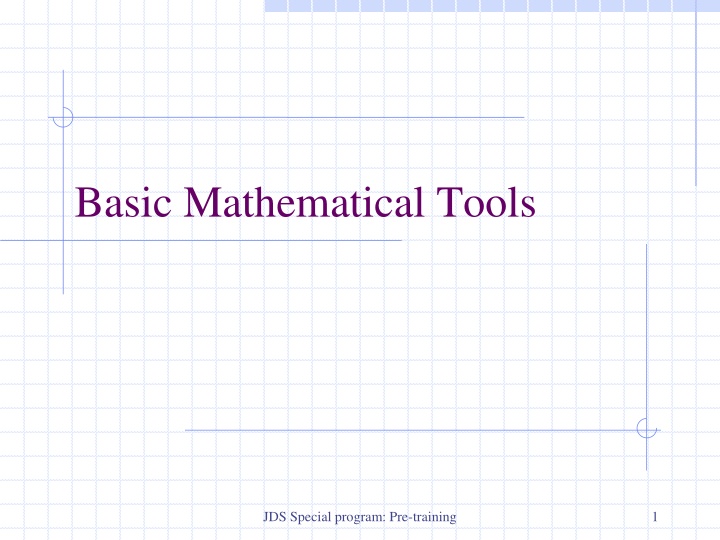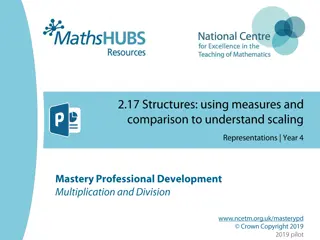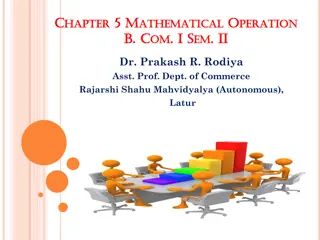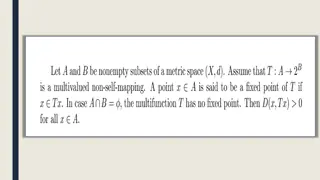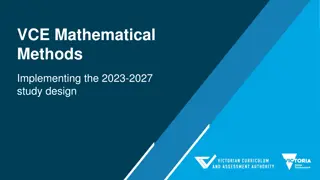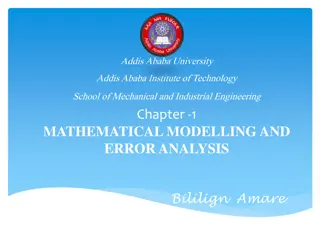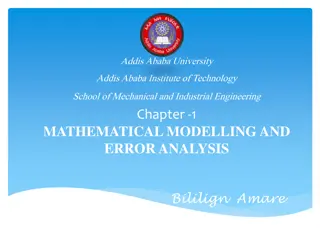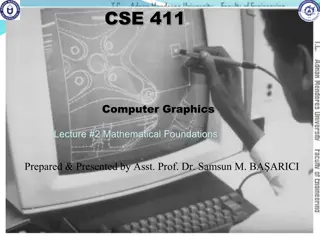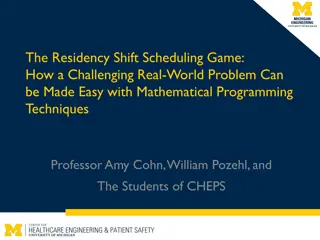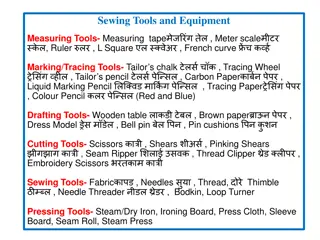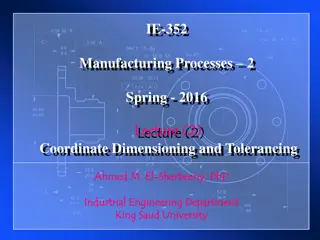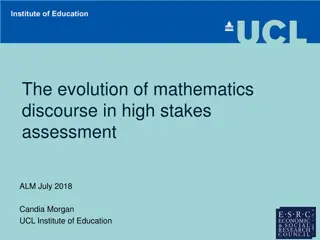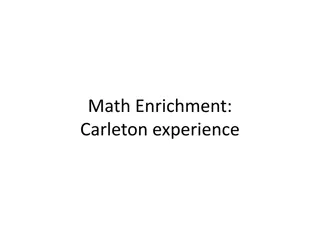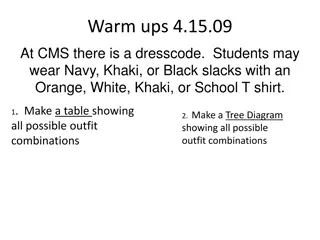Basic Mathematical Tools
Delve into essential mathematical tools such as summation, descriptive statistics, properties of linear functions, proportions, percentages, and more as part of a specialized pre-training program. Explore concepts like the summation operator, properties of functions, and practical examples to strengthen your foundational math skills.
Download Presentation

Please find below an Image/Link to download the presentation.
The content on the website is provided AS IS for your information and personal use only. It may not be sold, licensed, or shared on other websites without obtaining consent from the author.If you encounter any issues during the download, it is possible that the publisher has removed the file from their server.
You are allowed to download the files provided on this website for personal or commercial use, subject to the condition that they are used lawfully. All files are the property of their respective owners.
The content on the website is provided AS IS for your information and personal use only. It may not be sold, licensed, or shared on other websites without obtaining consent from the author.
E N D
Presentation Transcript
Basic Mathematical Tools JDS Special program: Pre-training 1
Basic Mathematical Tools 1. Summation Operator & Descriptive Statistics 2. Properties of Linear Functions 3. Proportions and Percentages 4. Some Special Functions & Their Properties Quadratic Functions The Natural Logarithm 5. Differential Calculus JDS Special program: Pre-training 2
1 Summation & Descriptive Stat. The summation operator: ?=1 ?? ?1+ ?2 + ?? Property 1: ?=1 Property 2: ?=1 Property 3: (???+ ???) = ? ??+ ? ?? [A.4] (??/??) ( ??)/( ??) ?1?1+ ?2/?2 (?1+?1)/(?2+ ?2) 2 ?? 2= ?1 ? [A.1] [A.2] [A.3] ? ? = ??. ???= ? ?=1 ? ? ??. 2 ?? 2+ ?2 2 2+ 2?1?2+ ?2 2 ?1 ?1+ ?2 JDS Special program: Pre-training 3
Descriptive Statistics Average: ? = (1/?) ?? ?? ? = 0 [A.5] [A.6] 2 ? ?2 (?? ?)2= ?? [A.7] (?? ?)(?? ?) = ??(?? ?) = (?? ?)?? [A.8] Median: the central value mean=2, median=2 {-4, 0, 2, 4, 8} JDS Special program: Pre-training mean=4, median=2 4 {-4, 0, 2, 4, 18}
2. Properties of Linear Functions Linear Function 1: y = 0 + 1x e.g. housing = 164 +0.27 income (See Fig.A1) Linear Function 2: y = 0 + 1x1 + x Partial effect & ceteris paribus [A.9] [A.12] ? ?1 if ?2= 0 ?1= JDS Special program: Pre-training 5
3. Proportions & Percentages Proportionate change: = ? ?1 ?0 ?0 ?0 [A.14] Percentage change: % ? = 100 ? ?0 [A.15] Percentage point change: The change in a variable that is measured as a %. JDS Special program: Pre-training 8
Cont. Proportions & Percentages Example: Michigan Sales Tax Increase In March 1994, Michigan voters approved a sales tax increase from 4% to 6%. Someone referred to this as a two percentage point increase, or an increase of two cents on the dollar. Others called it a 50% increase in the tax rate. Both claims are correct; they are simply different ways of measuring the increase in the sales tax. JDS Special program: Pre-training 9
4. Special Functions Quadratic Functions: y = 0 + 1x + 2x2 The slope: [A.16] ? ? ?1+ 2?2? The turning point: [A.18] ?1 ? = [A.17] 2?2 Econometrics 10
Cont. Special Functions Natural Logarithm: y = ln(x) [A.21] Some algebraic facts: log(x1x2) = log(x1) + log(x2), x1, x2> 0 log(x1 /x2) = log(x1) - log(x2), x1, x2> 0 log(xc) = clog(x), x > 0, c any number. Proportionate change: log(x1) - log(x0) (x1- x0) / x0 = x / x0 log(?)= ? Elasticity: log(?) ? ? ? [A.24] JDS Special program: Pre-training 12
log(x) < 0 for 0 < x < 1 log(1) = 0 log(x) > 0 for x > 1. JDS Special program: Pre-training 13
5. Differential Calculus Functions & the derivatives: y = 0 + 1x + 2x2 ; dy/dx = 1+ 2 2x y = 0 + 1/x; y = 0 + 1ln(x); Partial derivative If y = 0 + 1x1 + 2x2, then ?? ??1= ?1, dy/dx = - 1/(x2) dy/dx = 1/x ?? ??2= ?2. JDS Special program: Pre-training 14
Quiz 1 i. ii. iii. Suppose that family number 1 increases its monthly housing expenditure to $500, but the expenditures of other families remain the same. Compute the average and median housing expenditures. Find the average monthly housing expenditure. Find the median monthly housing expenditure. JDS Special program: Pre-training 15
Quiz 2 Suppose the equation below describes the relationship between the average number of classes missed during a semester (missed) and the distance from school (distance, measured in miles): missed = 3 + 0.2 distance. i. Sketch this line, being sure to label the axes. How do you interpret the intercept in this equation? ii. What is the average number of classes missed for someone who lives five miles away? iii. What is the difference in the average number of classes missed for someone who lives 10 miles away and someone who lives 20 miles away? JDS Special program: Pre-training 16
Quiz 3 Suppose that quantity of compact discs is related to price and income by quantity = 120 - 10 price + 0.05 income. What is the demand for CDs if price = 15 and income = 200? What does this suggest about using linear functions to describe demand curves? JDS Special program: Pre-training 17
Quiz 4 Suppose that the return from holding a particular firm s stock goes from 15% in one year to 18% in the following year. The majority shareholder claims that the stock return only increased by 3%, while the chief executive officer claims that the return on the firm s stock increased by 20%. Reconcile their disagreement. JDS Special program: Pre-training 18
